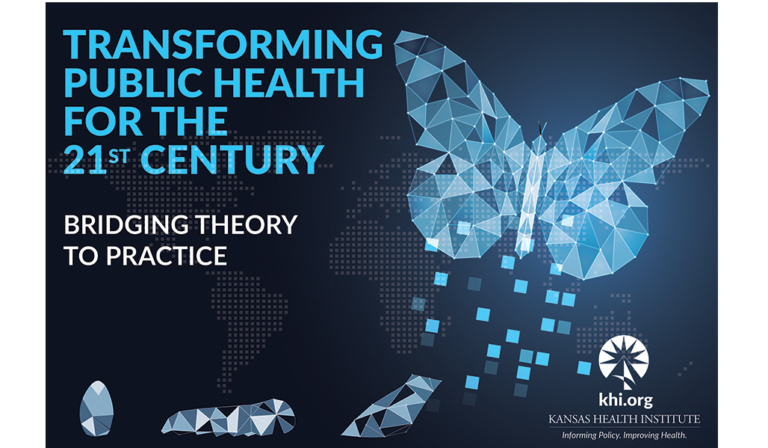In our previous post, we emphasized the importance of taking a portfolio approach to public health innovation. In this post, we delve deeper into the topic of innovation and explore what the culture and process of innovation in public health looks like. Innovation helps solve deep public health challenges, and there is a desire among many public health professionals to work in innovative organizations. Therefore, we hope this blog post will guide public health leaders in building a culture and process of innovation.
culture of innovation
Culture includes the beliefs, values, attitudes, behaviors, and practices that define how an organization operates. A culture of innovation reduces ties to the status quo and facilitates the process of innovation. Innovation is essentially a creative process that asks team members to stretch their imaginations and experiment with new approaches. The path of least resistance is rarely chosen because many factors favor the status quo. But organizations committed to innovation intentionally shape their culture to foster and encourage fresh ideas.
Everett M. Rogers’ seminal book “Diffusion of innovation” outlines the key attributes that contribute to an organization's innovative capability.1 These characteristics provide insight into what constitutes an innovative culture, including:
- Leaders driving change: Innovative organizations have leaders who embrace change and embrace risk. This leadership style reduces employees' reluctance to propose new ideas and creates an expectation for innovation.
- Innovation Champion: Innovation champions are individuals who advocate new ideas, overcome resistance, and help communicate the benefits of innovation to all levels of an organization, especially when top management has limited influence .
- Decentralized decision making: Innovative organizations foster more informed and responsive decision-making processes by empowering a broad range of employees to make decisions.
- Flexible process: Rather than being bound by rigid procedures, innovative organizations are adaptable and enable the integration of innovative strategies that require changes to business processes.
- Diversity and collaboration: Bringing together people from different backgrounds and disciplines fosters an environment where innovation can flourish through the exchange and integration of diverse ideas and perspectives.
- Slack resources: Recognizing that innovation requires time and resources, innovative organizations ensure that employees are not so overwhelmed with day-to-day tasks that they are incapable of developing and implementing new ideas.
- External connections: Strong connections with external stakeholders and partners broaden the organization's view of its own needs and emphasize the importance of innovation to stakeholders and community members.
Public health leaders seeking to foster a culture of innovation must identify and strengthen these characteristics within their organizations. Although not all characteristics are completely under an organization's control, in most cases these aspects can be sufficiently identified and improved to foster a culture of innovation that serves the organization.
innovation process
Innovation also requires implementation. The innovation funnel is a process that many organizations use to manage the process from idea to implementation. Here, a large number of ideas flow into the funnel, are gradually refined through successive phases, and finally only the most promising concepts are implemented. Despite its widespread adoption, criticisms of this approach exist, particularly regarding the risk that innovative ideas may be suppressed by some leaders. However, such concerns can be alleviated by establishing a strong culture of innovation within the organization. For example, decentralizing decision-making about what to do next and providing flexible processes to accommodate different types of ideas.
There are many different innovation funnel models, depending on the type, size, and purpose of your organization. However, some steps are common between these models.2
- Agenda setting: This step includes setting goals to address specific problems and exploring opportunities through the innovation process. For innovation to be successful, it is important to be responsive to real-world needs. In public health, innovation challenges may be derived from sources such as community health assessments, improvement plans, and strategic plans.
- Idea creation: The aim here is to discover new approaches to problem solving. This involves looking at challenges through new perspectives and different lenses. Idea generation takes many forms, such as brainstorming, but can be enhanced by techniques such as the nominal group method or his six thinking hats approach. Furthermore, innovative ideas often emerge by applying concepts from one field to another.3 For example, many ideas in this series rethink business strategies for public health.
- Idea selection and refinement: At this stage, ideas that appear likely to be successful are advanced for further development. Organizations need to leverage a culture of innovation to keep motivation high at this stage. By distributing decision-making to a broader group of employees, rather than centralizing it in top leaders, you can foster greater buy-in. Additionally, some ideas may have potential but are not yet ready to move forward. Rather than discarding them, innovation teams can help innovators refine their ideas for future consideration, improving the skills of both innovators and innovation champions.
- development: At this stage, the resources needed to develop the innovation are allocated, such as staff time and financial investment. Adjustments may be needed to better align innovation with the organization or to introduce new organizational processes to support innovation. Techniques such as plan, do, learn, act, or action learning are effective ways to make these adjustments.
- Implementation or routineization: In the final stage, innovation becomes an integral part of the organization's daily operations. New ideas can be incorporated into normal operations and include training, process adjustments, establishing metrics, and incentives to adopt innovations. The aim is to change the perception of innovation from a temporary project to a permanent element of an organization's culture.
conclusion
By fostering a culture and process of innovation within public health organizations, leaders can address serious public health challenges and ensure the long-term success of their organizations. Successful innovation requires a balance between unbridled creativity and a thorough process for implementation. By fostering an environment that supports both a culture and mechanisms for innovation, public health leaders can increase their efficiency in developing a robust innovation portfolio.


